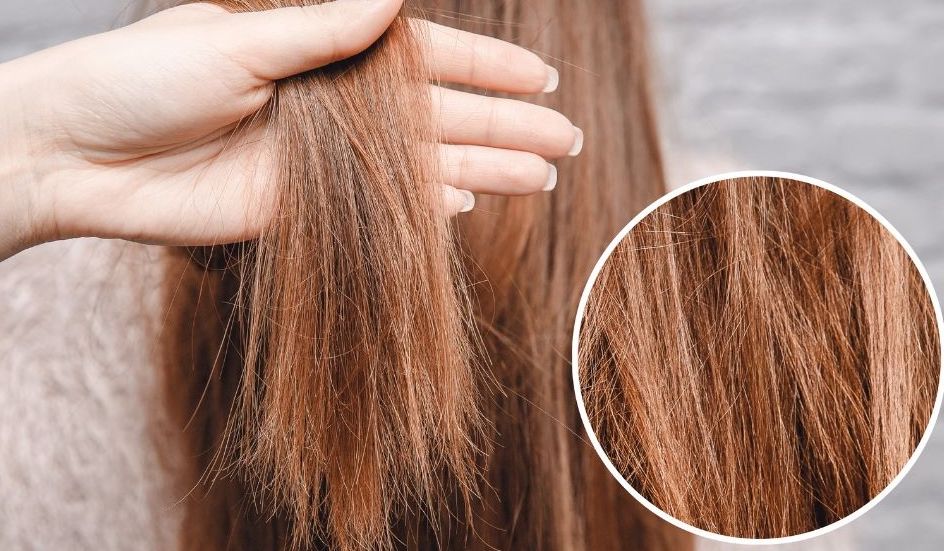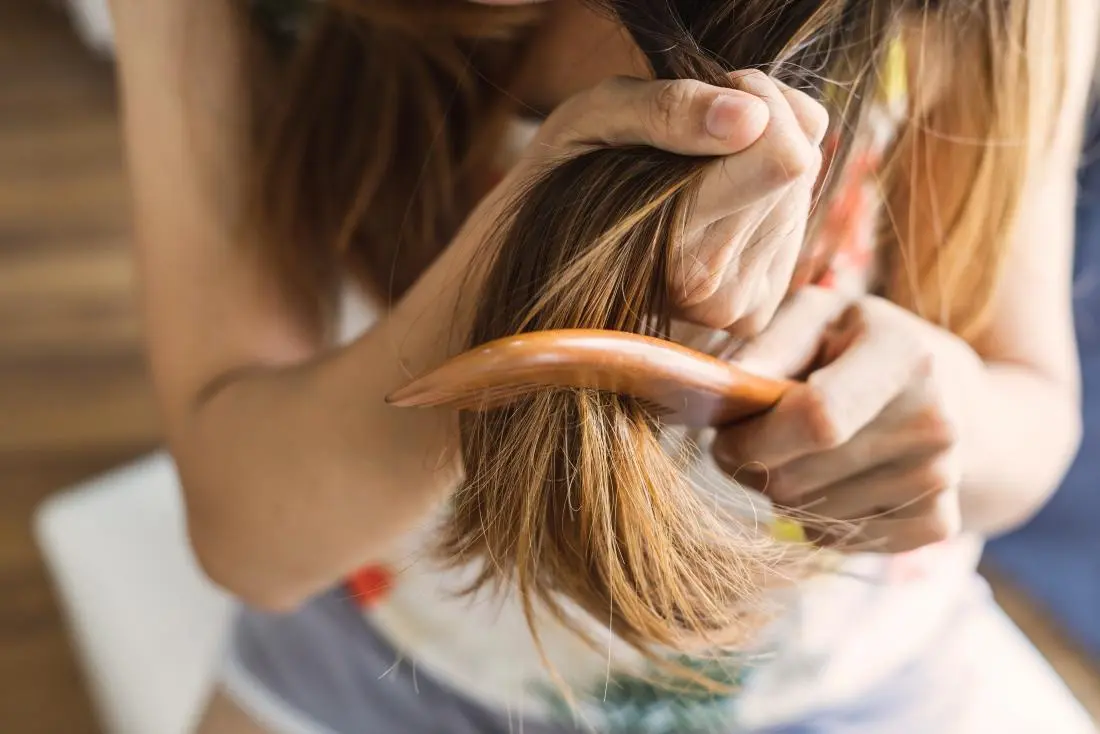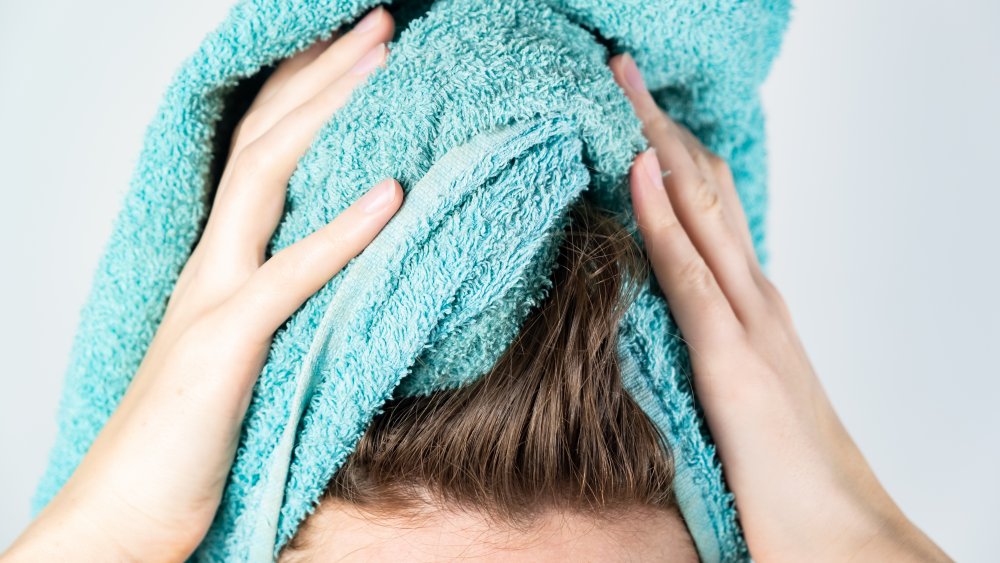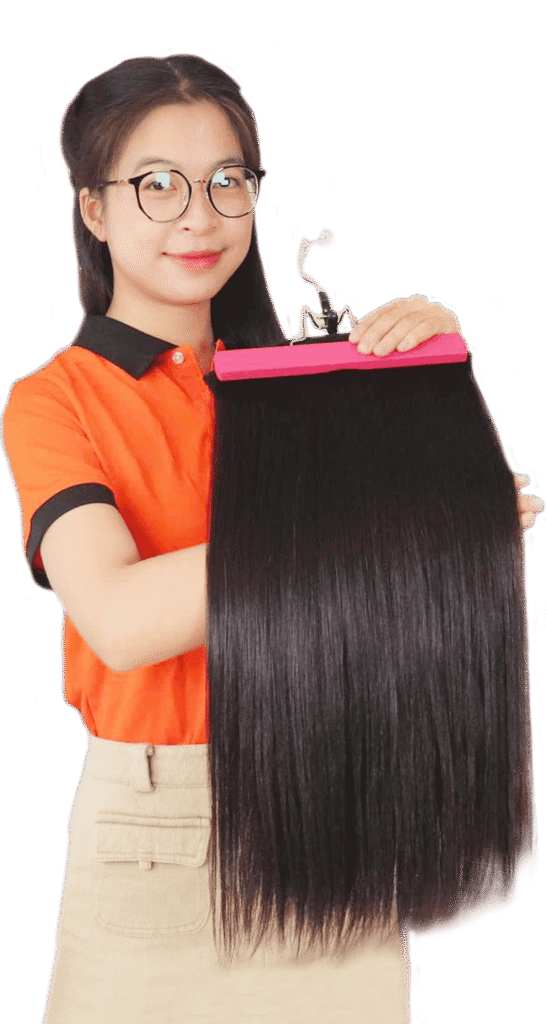Hair breakage has many different causes. And only if you were born with super strong hair that totally invincible with anything, if not, at some point, your hair will almost going to be a fragile newborn baby, whether that’s from too much heat styling or color-treating. And yup, hair breakage super sucks. Even though it is a pretty common phenomenon that most of us will experience at some point in our lives, it’s still a terrible problem! So if you’re seeing those suspiciously short and uneven strands in random parts of your hair and wonder if it’s breakage, you have come into the right place. In this blog post, we will tell you all things you need to know about hair breakage causes as well as the way to prevent and treat it.
I. What Is Hair Breakage?
First and foremost, you must understand what hair breakage is. Hair breakage and shedding may appear to be the same thing, but they are not. Shedding is an inevitable part of the hair cycle. You’re supposed to lose hair every day – 50 to 100 hairs per day, to be exact.

Breakage, on the other hand, happens when the actual strand shreds. Most of the time, you won’t see full hairs on the ground, but rather small pieces of hair. Consider the hair cuticle, which is made up of a series of stacked layers similar to shingles on a roof. When these individual sheets of hair fibers split from the rest of the pile, it’s breakage. It can break off from the tips when your ends are split and need to be trimmed or it can rip halfway up the strand or even close to the root. Where and how hair breaks usually depend on several different factors.
II. What Causes Hair Breakage?
People can experience hair breakage that affects all types of hair from straight to curly. It can make hair look frizzy or coarse either at the ends or near the top, or crown, of the head. Hair breakage can happen for a variety of reasons, including specific hair products, diet, and stress. Let’s see 7 common causes of hair breakage!
Hair Breakage Causes #1: Incorrect Brushing and Combing
Excessive brushing can also cause breakage. People may not need to brush their hair as frequently as they believe. The American Academy of Dermatology recommends that people only brush their hair as much as they need to style it.

2. Heat and Lack of Moisture
Using heat (blow-dryers, straighteners, curling wands) on the hair frequently can damage the hair shafts and remove moisture from the hair, resulting in brittle hair and hair breakage. Even hot and humid weather can dry out the hair and increase the risk of breakage. By reducing heat treatments, people can often avoid and prevent future hair breakage.
Hair Breakage Causes #3: Improper Towel Drying

Rubbing wet hair with a towel can cause hair damage, frizz, and breakage. Wet hair is more prone to breaking than dry hair. Instead of rubbing the hair, wrap it in a towel to absorb moisture or let it dry naturally in the air.
4. Lack Of Hair Trims
A lack of regular haircuts can result in split ends. These broken ends make the hair more likely to break higher up, nearer the hair shaft. Hair trims may help keep your hair healthy and free of split ends. See your stylist around every eight weeks, depending on your hair length and texture. Even if you’re growing out your hair, trimming damaged ends could prevent further breakage.

You can think of a hair trim like you would skin exfoliation — in both instances, you may need to remove some of the old cells to help new ones grow. When you have split ends, these splits in the cuticle can travel up the rest of the length of your hair and possibly lead to breakage.
Hair Breakage Causes #5: Diet
Nutrition plays an integral part in promoting healthy hair. If people are deficient in certain nutrients, they may have weakened hair that appears dry, dull, or brittle. Severe nutrient deficiencies may also lead to hair loss. Make sure you’re getting enough zinc, iron, and folic acid in your daily diet. Adequate protein and antioxidants (found in plant foods) can also keep your hair damage-free. Certain vitamins can also help hair growth.
6. Stress
There’s a multitude of evidence showing links between stress and hair loss, and we all know that extreme stress can cause damage to the hair and a condition called telogen effluvium. Telogen effluvium is a common type of alopecia caused by stress most likely linked to hair damage. This type of stress makes your follicles go dormant, so hair that’s in the middle of a growth cycle may break off. You might notice old hair fall out, too. Managing your stress may result in healthier hair.
Hair Breakage Causes #7: Tight Hairstyles
If people are tying their hair back frequently in tight hairstyles, or using elastic bands to tie their hair up, this can lead to hair breakage. Tight hairstyles can stretch or break the hair away from the root.

The problem with hair ties is they pull on your scalp and hair cuticle. You may even notice some hair falls out every time you undo your ponytail. You can fix this by wearing your hair down once in a while, or by making your updo a bit looser so it doesn’t pull on your hair so much.
III. How To Stop Hair Breakage?
People can take steps to avoid future hair breakage, including the following:
- Keep Your Hair Moisturized: One of the main reasons your hair is breaking off could be that you aren’t applying enough moisture to your hair. It’s especially important to heed this rule if your hair is curly because it’s prone to becoming brittle and breaking off.
- Target Split Ends Early On: Use a daily split-end sealer. Be sure to use a nourishing leave-in conditioner that helps smooth and seal split ends right after you detangle and as a curl refresher in between washes.
- Go Easy On The Heat: Blow-drying and flat ironing hair on a regular basis can be damaging. When possible, use heat-free tools such as flexi rods or hair rollers. If you must use heat, apply a heat protectant first and then use tools in a low-heat setting.
- Use A Pre-wash Moisturizer: On wash day, add moisture to your hair by saturating strands with a rich conditioner and letting it sit for about 10 minutes before washing it with shampoo.
- Shampoo Correctly: It’s important to use a sulfate-free shampoo that doesn’t contain harsh, stripping cleansers that dry out your hair, but it’s also important where you use it. Shampoo should only be applied to the scalp when necessary, not to the hair shafts. Finding a shampoo with moisturizers for your hair type is essential for protecting the hair shaft and cleansing the scalp.
IV. Treating Hair Breakage
There are ways to prevent breakage and even out hair while you treat the source of your damage, but actually fixing a broken strand isn’t doable. You can’t mend your hair like you can a broken zipper. However, what you can do is start by getting a proper trim to help even out any ragged edges. Think of a haircut as one of the ultimate quick fixes for hair breakage.
Once all hairs are evened out and you have a clear understanding of what led to your breakage in the first place, then you can start working on a treatment plan. Normally, you can often boost the health of your hair by addressing the cause, using hair-strengthening products, or changing your haircare routine.


 BEST SELLING PRODUCTS
BEST SELLING PRODUCTS Wig Hair
Wig Hair WHOLESALE
WHOLESALE Contact us
Contact us Sale Events
Sale Events
